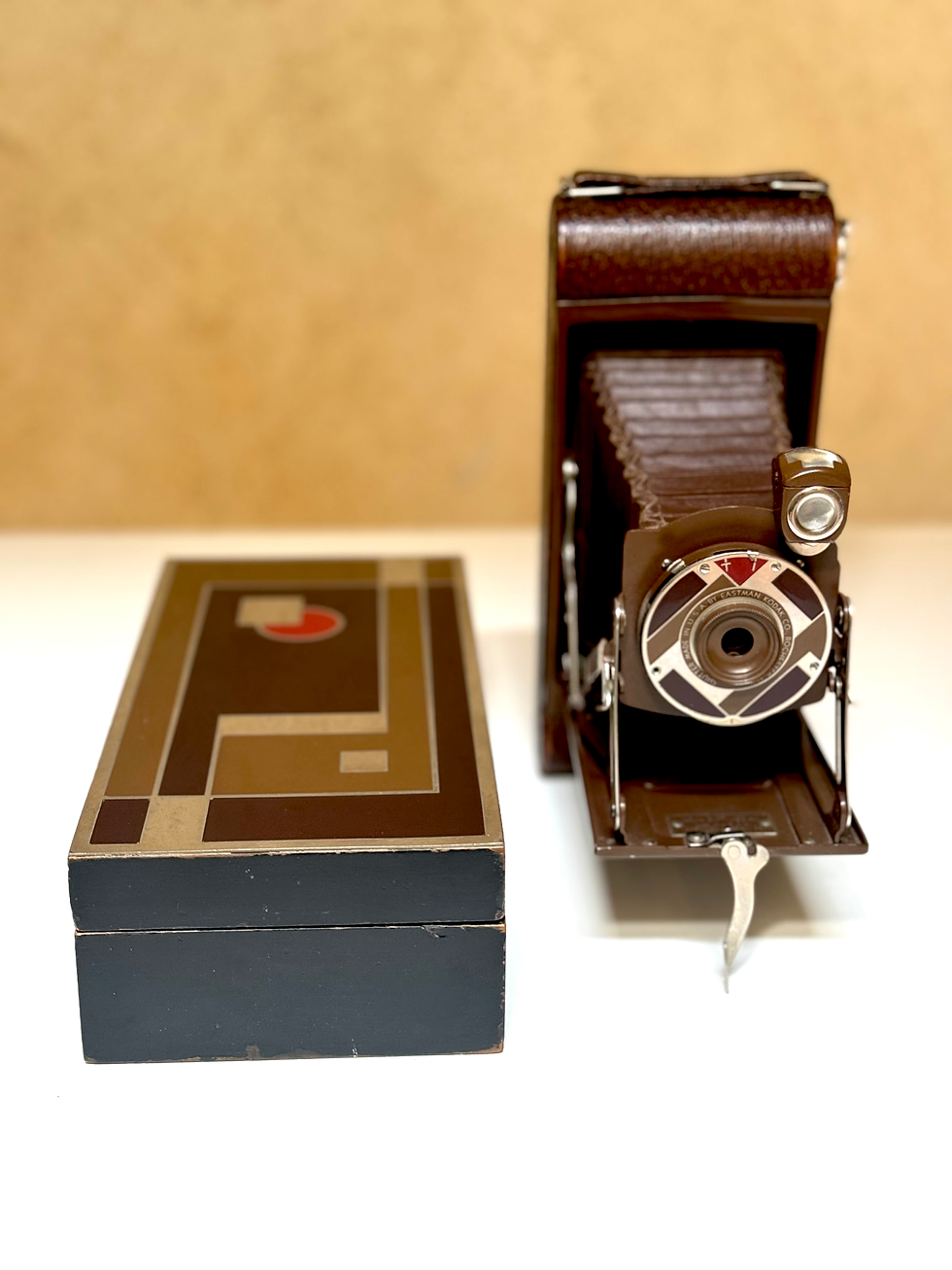Exceptional condition for this folding chair and its Art Deco lacquered case in brown and red tones enhanced with silver trim.
The body of the device is covered in brown leather. The bellows are original and also made of leather of the same color.
This special version of the No. 1 A Pocket Kodak Junior appeared for Christmas 1930 for the American market.
Kodak asked designer Walter Dorwin Teague to redesign the usually plain front plate. Teague then created a pattern with geometric shapes inspired by modernist painters such as Mondrian, reflecting the convergence between Art and Industry.
This Art Deco design is similar to that of the Beau Brownie.
In an advertisement published in 1930 in the New York Times, Kodak described the camera as "one of the finest Kodaks ever offered".
Kodak Gift No. 1 A Art Deco
Exceptional condition for this folding chair and its Art Deco lacquered case in brown and red tones enhanced with silver trim.
The body of the device is covered in brown leather. The bellows are original and also made of leather of the same color.
This special version of the No. 1 A Pocket Kodak Junior appeared for Christmas 1930 for the American market.
Kodak asked designer Walter Dorwin Teague to redesign the usually plain front plate. Teague then created a pattern with geometric shapes inspired by modernist painters such as Mondrian, reflecting the convergence between Art and Industry.
This Art Deco design is similar to that of the Beau Brownie.
In an advertisement published in 1930 in the New York Times, Kodak described the camera as "one of the finest Kodaks ever offered".
-page-001-ff20ec56-b7c0-11eb-b1a8-eec3a079c8c5.jpg)
